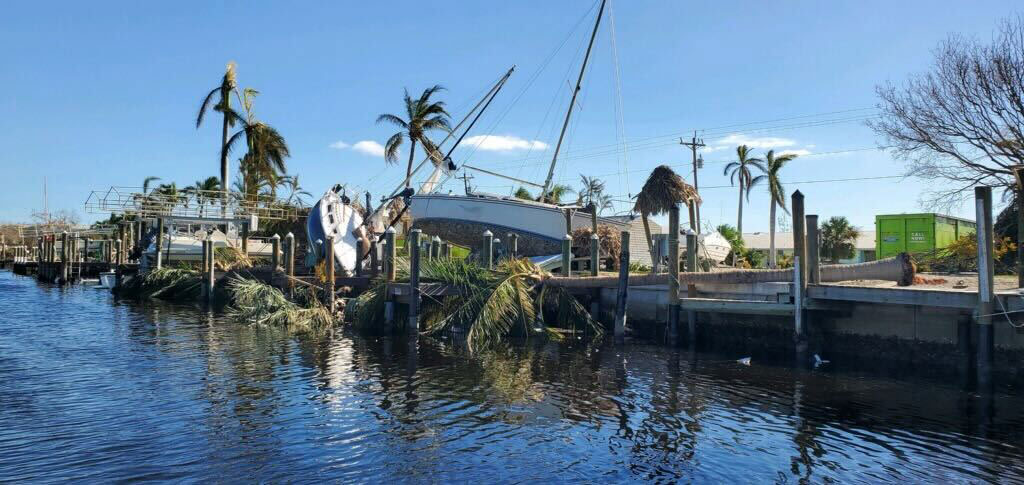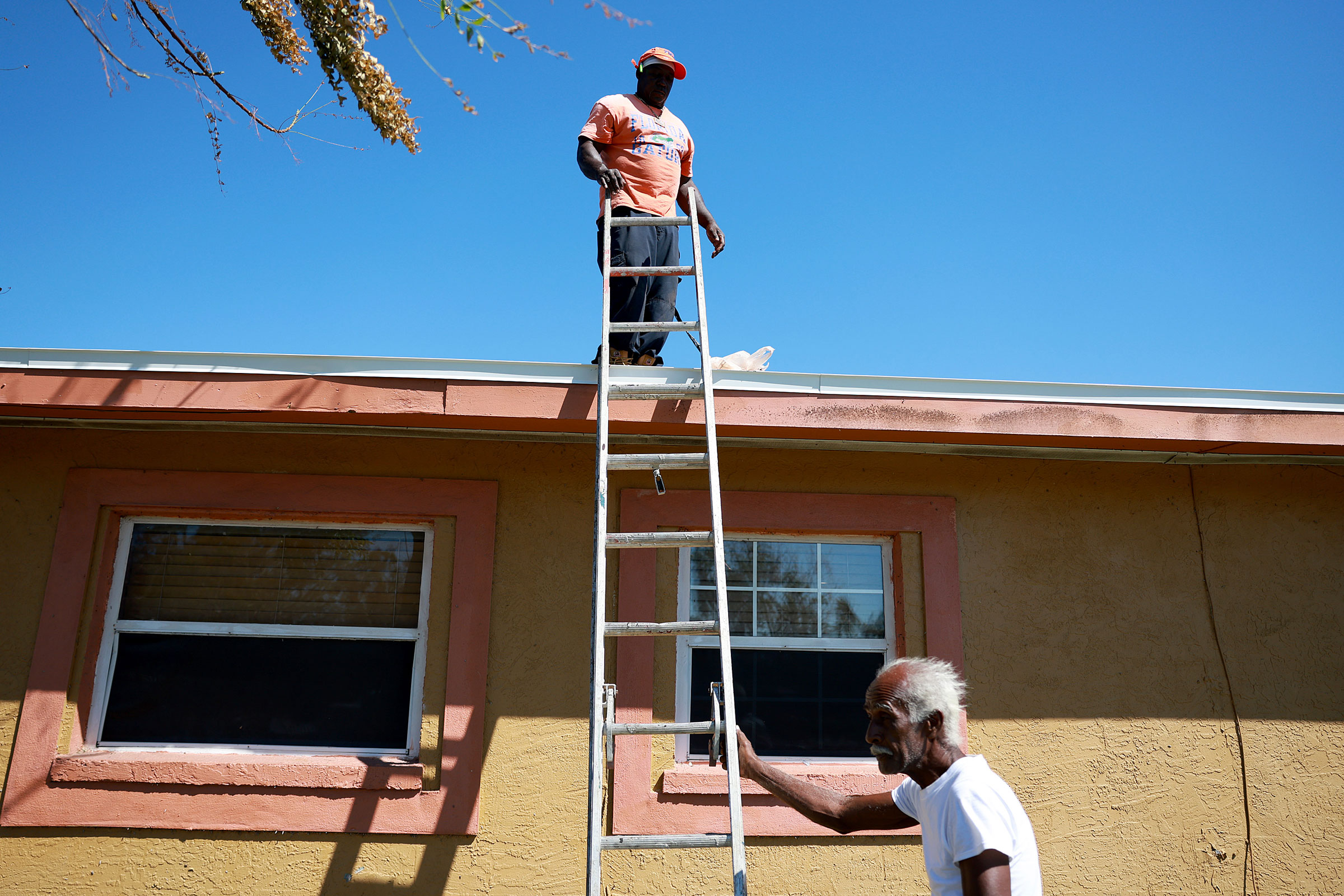When Hurricane Charley hit Punta Gorda, Fla., with 145 mph winds in 2004, the storm demolished Diane Caputo’s restaurant, Monty’s. It took her more than three years to reopen at the original location. When Hurricane Ian made landfall last month at similar strength, Monty’s fared much better.
“I have an outdoor bar patio that took a pretty bad hit, we have water in here and we’ve been cleaning up ever since Ian passed,” Caputo says. But, within a week, she was able to reopen the Italian eatery, which has been a Punta Gorda fixture since 1983.
It wasn’t just good fortune that spared Monty’s from the wrath of Hurricane Ian, which left Florida with upwards of $40 billion in property damage, making it one of the costliest storms to ever hit the state. The new Monty’s was built to Florida’s building codes, some of the strictest in the country, which are intended to ensure new construction can withstand hurricanes. “Charley was pretty devastating,” she tells TIME. “The buildings were a lot older [then].”
As Floridians pick up the pieces from Ian’s cataclysmic path, which was one of the strongest to hurricanes to hit the continental U.S., a long-standing tension has resurfaced. Many of the residents and business owners hardest hit by the storm are those least able to afford the high costs of rebuilding. They know what to do to prepare for the next storm—build back stronger—but having that knowledge doesn’t make it any more affordable.
Roy Wright, CEO of the Insurance Institute for Business & Home Safety (IBHS), a scientific research nonprofit, points out that the cost of reconstruction and building better structures to withstand future storms will be expensive. “It likely means that there will be a different demographic living there five years from now, then who may have lived there for the last 30 years,” he tells TIME.
Hurricane shutters or impact-resistant windows alone, required in new construction, add thousands of dollars in additional building costs, for instance. The average cost for a new home in Florida is about $20,000 higher than the U.S. average, according to Home Advisor.
Hurricane damage exacerbates disparities
Despite the state’s storm history, Florida didn’t have comprehensive regulations to ensure buildings could withstand hurricanes until after Hurricane Andrew hit South Florida in 1992—causing some $25 billion in damages ($54 billion in 2022 dollars.)
A statewide code went into effect in 2002. Although the code has been updated every few years since, it doesn’t protect buildings that were constructed before the code came out.
Coastal regions are particularly vulnerable with rising sea levels, just like Pine Island where Todd Lurty ran FunShine Island Services, a boat tour business that offered dolphin-watching, shell-collecting excursions, and other marine activities. Ian destroyed Lurty’s home and base of operations. “I lived in a large camper, just trying to live life kind of simple, running charters right on the water,” he says. “It took about five tosses and tumbles and flips and rolls.”
Lurty has also had to stop work since Ian cripped the island’s infrastructure and abruptly halted the flow of tourists. “I haven’t lost hope, and that’s pretty much all we have at this point,” he says. “It will come back, but I think it’s just going to take a minute.”

Florida, long touted as a lush utopia for the wealthy that doesn’t levy income or estate taxes, also hosts a serious affordable housing crisis. Wealth disparity can be particularly brutal in the sunniest towns. “In that Fort Myers area [where Hurricane Ian hit], you can move from $5 million mansions to $100,000 mobile homes in two-and-a-half miles,” Wright says. “They can be in the same community, yet live very different lives.”
The most vulnerable homes were those built during Florida’s suburban boom between the 1960s and 1980s, which were built using cheaper materials and methods than both older homes, and new construction. These also tend to be homes that retirees on fixed incomes and service workers can afford. Ultimately, the cost of rebuilding is often prohibitive for the owners of less expensive homes, who are statistically less likely to have property insurance.
Lurty wishes there were more options for people living in precarious homes to relocate. “I would like to see them make that affordable, for your average Joe, working-class guy, not just a millionaire-billionaire that can come in and build these great big fancy houses,” he says. “The super-rich people aren’t the ones at the restaurants working and cooking your food. They’re not the ones driving the boats out here taking people around.”
Following Hurricane Michael’s decimating hit to the Florida panhandle in 2018, the average sale price of homes in the coastal region skyrocketed when longtime residents couldn’t afford to rebuild. According to reporting from the Wall Street Journal, in Mexico Beach average home prices rose from $271,000 in 2019 to $453,000 in 2021.
Just like decaying structures, much of the existing infrastructure across the state is “beyond its useful life,” having been built 60-70 years ago, says Wright. For instance, the Transportation Department estimates that more than 3,500 miles of highway in Florida is in poor condition.
Caputo faced the infrastructure crisis firsthand. “I’m trying to help my staff. I’m limiting my hours, because I know there’s no streetlights where they have to drive and I don’t want them getting hurt,” she says.
At least 127 deaths in Florida are linked to Ian. Ahead of the storm, more than 2.5 million Floridians received evacuation orders, but for many who stayed behind, relocating somewhere safe wasn’t possible because of the cost. Evacuees rack up costly expenses, including transportation, housing and food, that typically span a multi-day or multi-week period. The average family shells out $5,000 to safely evacuate a hurricane, according to Globalpro Recovery.
“There’s definitely going to be a tremendous financial burden for people here,” Caputo says. “My dad always told me, ‘you can replace everything you have, but you can’t replace your life,’ and I live by those words.”

Rebuilding for the future
Wright hopes that in addition to the federal disaster aid relief coming into Florida after Hurricane Ian, there will be more state and local investment to help lower-income residents take preventative measures—including upgrading infrastructure and improving existing buildings.
Lurty explains that although he knows storm intensity exacerbated by climate change is happening worldwide, he’s grateful that for his home the risk seems manageable. “We’re facing storms that’re rebuildable. Other parts of the world are facing things that aren’t,” he says.
As for Caputo, she realized after Charley, it’s vital to take these disasters seriously and learn from them while rebuilding. “We’re going into our 40th year of business on Oct. 23, so it’s not our first rodeo,” she says. “You can’t control mother nature, so you’ve just got to prepare.”
More Must-Reads from TIME
- Cybersecurity Experts Are Sounding the Alarm on DOGE
- Meet the 2025 Women of the Year
- The Harsh Truth About Disability Inclusion
- Why Do More Young Adults Have Cancer?
- Colman Domingo Leads With Radical Love
- How to Get Better at Doing Things Alone
- Michelle Zauner Stares Down the Darkness
Contact us at letters@time.com